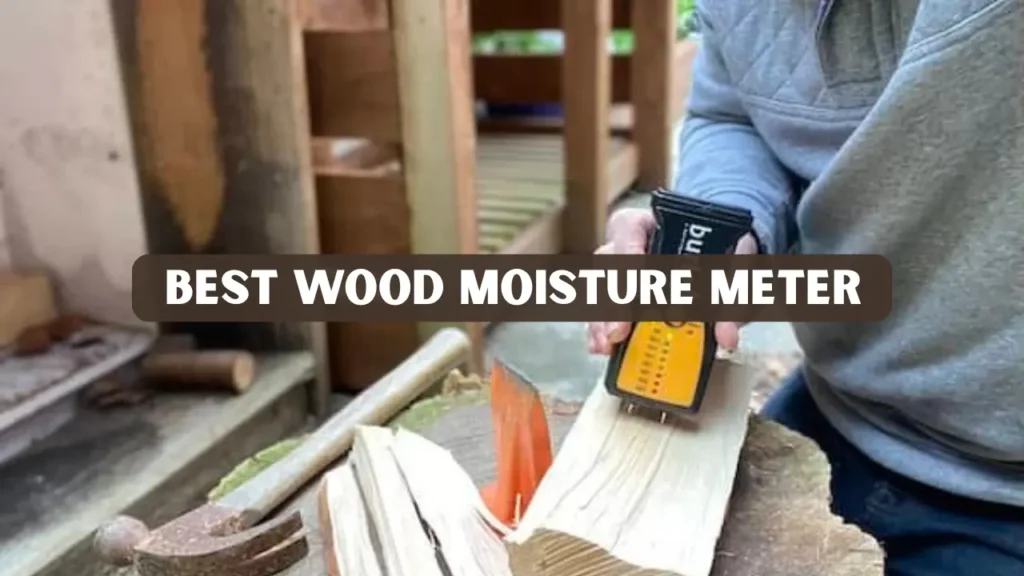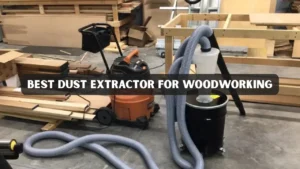If you turn, carve, or build with real wood, moisture content determines whether your piece behaves or betrays you. A good wood moisture meter can make the difference between predictable results and unwanted surprises. Splitting, warping, or unexpected movement often happens when moisture levels are ignored. Using the right meter ensures your work stays stable and precise.
In this article, you’ll learn about the different types of meters available. We’ll guide you on choosing the best wood moisture meter for woodturning or woodworking. Trusted product recommendations are included to help you make informed decisions. Practical usage tips will help keep your projects beautiful and structurally sound.
Key Takeaways
- A wood moisture meter helps prevent warping, cracking, and structural failure.
- Accurate readings ensure your wood is ready for woodworking, flooring, or construction.
- Pin and pinless meters each serve different needs.
- This guide covers the best wood moisture meters, buying tips, and real case studies.
What Is a Wood Moisture Meter and Why It Matters
A wood moisture meter measures the amount of moisture inside wood to help prevent woodworking issues such as bending, swelling, or splitting. Professional carpenters, DIY woodworkers, and home inspectors rely on the best wood moisture meter to ensure the wood is stable enough for use.
These meters provide consistent results, accuracy, and reliability, ensuring projects remain durable and finished surfaces are even. Correct moisture measurement also improves workflow efficiency, reduces waste, and helps maintain high-quality standards in woodworking.
How to Read Moisture Meter Results
- Multiple readings: Measure at several points (pith, mid-radius, outer edge). Average them. This helps you detect uneven moisture pockets that may cause hidden stresses during turning or drying.
- Species correction: Some meters let you set the wood species because EMC varies by species, hardwoods and softwoods behave differently. Using the correct species setting improves accuracy and reduces errors caused by density differences.
- Acceptable ranges: For turning green blanks, 10–20% is common to start turning for some projects; for finished indoor pieces, aim for 6–8% (varies by climate). Staying within these ranges minimizes the risk of cracks, warping, and surface defects after finishing.
- Monitor over time: Track readings during kiln or air drying until stable for several readings across days. Stable moisture levels indicate that the wood has reached equilibrium and is ready for machining or finishing.
Types of Wood Moisture Meters
Pin-Type Moisture Meters
Pin meters use two metal pins inserted into the wood to measure electrical resistance. These models are popular among woodworkers who need highly accurate, deep readings, especially for dense hardwoods and thick lumber. Pin meters are particularly effective when monitoring core moisture levels in large pieces.
Pinless Moisture Meters
Pinless meters use a sensor plate that scans moisture without leaving holes. They are ideal for keeping surfaces clean and for rapid scanning over large boards, flooring, or veneer sheets. Pinless meters allow for non-destructive testing, making them ideal for finished surfaces and delicate materials.
Best Wood Moisture Meter: Top 12 Options
Below is a curated list of reliable and accurate tools suitable for woodworking, flooring, and home inspections. This list will help readers choose the best wood moisture meter for both professionals and hobbyists, ensuring consistency, precision, and long-term quality.
1. Wagner Orion 940
- Pinless model: Allows non-invasive readings without leaving marks on the wood
- High accuracy with deep scanning range: Provides reliable readings even in dense or thick lumber
- Suitable for large boards and slabs: Ideal for assessing moisture in wide surfaces quickly and efficiently
2. Dr. Meter MD-912
- Pin-type: Uses wo probes to measure moisture directly inside the wood
- Easy to operate and affordable: Great for beginners and budget-friendly users
- Good for indoor woodworking projects: Ideal for furniture building and small-shop tasks
3. Klein Tools ET140
- Pinless
- Quick scanning of thick wood materials. This allows you to inspect moisture without leaving holes on the surface.
- Ideal for flooring installers. It helps speed up large-area inspections while maintaining consistent accuracy
4. General Tools MMD4E
- Pin-type: Uses metal probes to provide dependable core readings for various wood densities.
- Budget-friendly: A great choice for those who want accuracy without a high price tag.
- Best for hobbyists and beginners: Its simple design and clear display make it ideal for users learning moisture control.
5. Lignomat Mini-Ligno E/D
- Pin-type: Delivers deep, consistent readings using durable and sharp probe pins.
- High precision: Known for its reliable accuracy, especially in controlled shop environments.
- Perfect for fine woodworking and furniture making: Ensures moisture levels are spot-on for crafts requiring tight joinery and flawless finishes.
6. Tavool Digital Moisture Meter
- Pin-type: Provides quick and reliable readings through dual-pin contact.
- Works on multiple materials including wood: Supports drywall, concrete, and lumber, making it a versatile tool for mixed-project workshops.
- Popular among DIYers and small workshops: Its user-friendly features make it a go-to option for everyday moisture checks.
7. Stihl Wood Moisture Meter
- Pin-based: Uses durable metal probes to deliver accurate internal moisture readings.
- Portable and sturdy: Built with a rugged body that withstands field use and workshop environments.
- Used for lumber and firewood assessment: Ensures proper drying levels for safe burning and stable woodworking results.
8. MoistureMaster Pro
- Pinless design: Scans surfaces without causing damage, ideal for finished or delicate materials.
- Good for contractors handling large volumes of timber: Its wide scanning plate allows rapid evaluation of bulk wood.
- Fast and efficient for commercial projects: Reduces inspection time while maintaining consistent accuracy on every pass.
9. Protimeter Surveymaster
- Dual mode with both pin and pinless: Offers flexibility for deep readings and non-invasive surface checks.
- Professional-grade accuracy for inspections and quality control: Trusted by inspectors for detecting hidden moisture in critical areas.
10. Extech MO55
- Pin and pinless: Provides two measurement methods for versatile moisture detection in different materials.
- Quick results: Displays readings instantly, helping you diagnose moisture issues on the spot.
- Great for home inspections and renovation projects: Helps identify leaks, dampness, and structural moisture before damage spreads.
11. Bessemeter Digital Wood Meter
- Pin-type: Measures internal moisture levels through direct contact for dependable accuracy.
- Works well for furniture makers and cabinet shops: Helps ensure wood is properly conditioned before assembly or finishing.
- Provides reliable readings on different wood species: Species correction options improve consistency across hardwoods and softwoods.
12. Metrica Wood Scanner
- Pinless: Scans large surfaces smoothly without leaving marks or indentations.
- Smooth scanning and high consistency: Delivers even readings across panels, boards, and sheet materials.
- Suitable for flooring, paneling, and workshop use: Ideal for professionals who need fast, uniform moisture checks on wide areas.
How to Choose the Best Moisture Meter
Accuracy
Look for a meter with a proven track record of consistent readings across multiple species. Reliable accuracy ensures your woodworking or construction project maintains structural integrity and reduces post-installation issues.
Depth Range
Pinless meters vary in depth sensitivity while pin meters measure at specific insertion points. Ensure the meter you select covers the thickness of the wood you work with and provides flexibility for both thin and thick materials.
Durability
Meters used on job sites should be sturdy and resistant to impact, dust, and temperature fluctuations. Reliable build quality prolongs the tool’s life and ensures consistent performance across multiple projects.
Readability
A bright and clear display is essential for reading results in dim or cluttered environments, allowing for fast and error-free measurements.
Wood Species Settings
Meters with species correction settings offer better accuracy by adjusting for different wood densities and moisture absorption rates. This is particularly important when working with hardwoods and softwoods in varying climates.
Additional Features
- Battery life and availability: ensures long-lasting performance and easy replacement
- Compact and portable design: easy to carry and use in different work areas
- Hold function for easy recording of readings: allows for accurate documentation and reference
- Calibration options: adjust or verify readings to maintain accuracy and reliability
Case Study: Real World Usage and Results
- A woodworking shop in Illinois reported that using a professional-grade moisture meter reduced failed projects by nearly half. Before adopting the device, wood panels often warped during finishing. After using a reliable meter consistently, accuracy and project durability increased significantly, leading to higher client satisfaction and more repeat business.
- A home inspector in Florida noticed recurring floor damage due to hidden moisture. After switching to a dual-mode meter, inspections became more precise, and repair costs for clients decreased. This also led to improved credibility and trust for the inspection service.
Why Accuracy Matters in Woodworking
Moisture content directly affects the stability of wood. Using wood too early or with inconsistent moisture can lead to warping, cracking, and diminished finished quality.
Using the wood moisture meter ensures the material is conditioned properly, resulting in long-lasting, high-quality outcomes. Proper moisture measurement also helps optimize drying schedules and prevent costly delays in production.
Safety Recommendations
- Avoid using meters on surfaces excessively wet beyond the meter’s range. Always check moisture levels carefully to prevent costly mistakes.
- Store meters in dry spaces to prevent damage. This ensures even drying and reduces the risk of warping.
- Check calibration regularly to ensure accurate readings and consistent results. Uneven moisture can lead to internal stresses and cracks.
- Follow manufacturer guidelines to maintain warranty and reliability. Confirming moisture content ensures smooth sanding and consistent finish quality.
Conclusion
Choosing the best wood moisture meter ensures accuracy, stability, and long-term project success. Selecting the right model, performing regular calibration, and monitoring moisture consistently allows both professionals and hobbyists to maintain high-quality results in woodworking, flooring, and home construction.
By integrating moisture monitoring into your workflow, you can prevent costly structural issues and achieve durable, precise, and beautiful finished projects. Using a reliable wood moisture meter six times throughout your workflow ensures consistently accurate readings and improved project outcomes.
FAQs
What is the ideal moisture level?
Most indoor woodworking projects require moisture levels between 6 and 8 percent, depending on wood species and climate.
Should I choose pin or pinless?
Pin models offer deep accuracy, while pinless models protect the wood surface and allow fast scanning.
How often should I calibrate my meter?
Calibration every few months ensures accurate results and prolongs the meter’s operational life.
Can I use the same meter for different wood species?
Yes, but meters with species correction settings provide more reliable readings across various types of wood.
Are dual-mode meters better for professionals?
Yes, they provide both surface and deep readings, making them ideal for contractors, inspectors, and fine woodworking.
How can I improve workflow with a moisture meter?
Regular monitoring allows woodworkers to plan drying and finishing schedules more effectively, reducing material waste and avoiding project delays.




